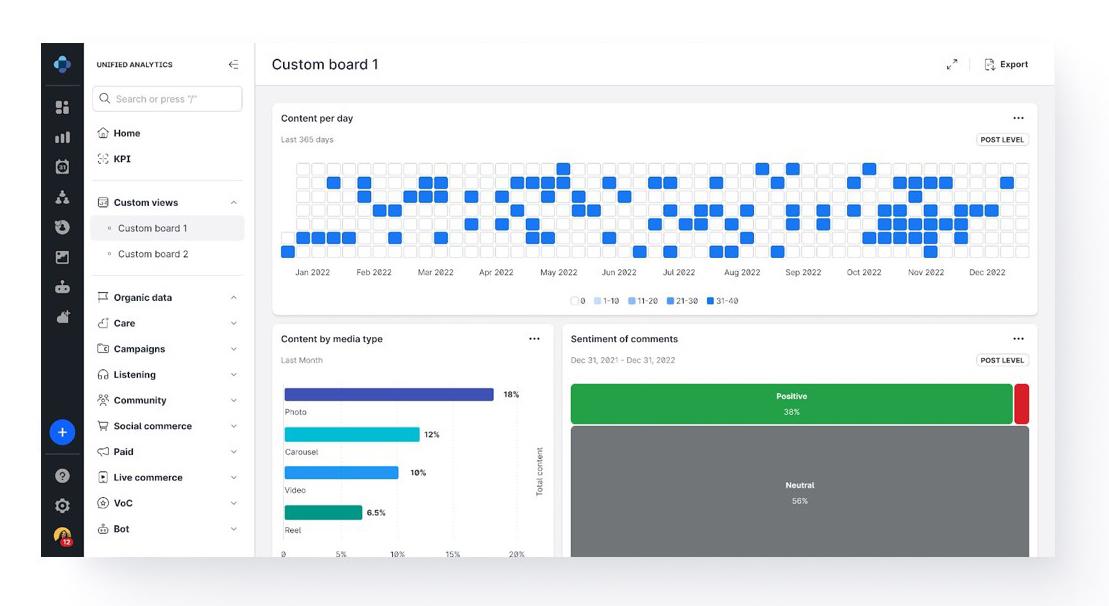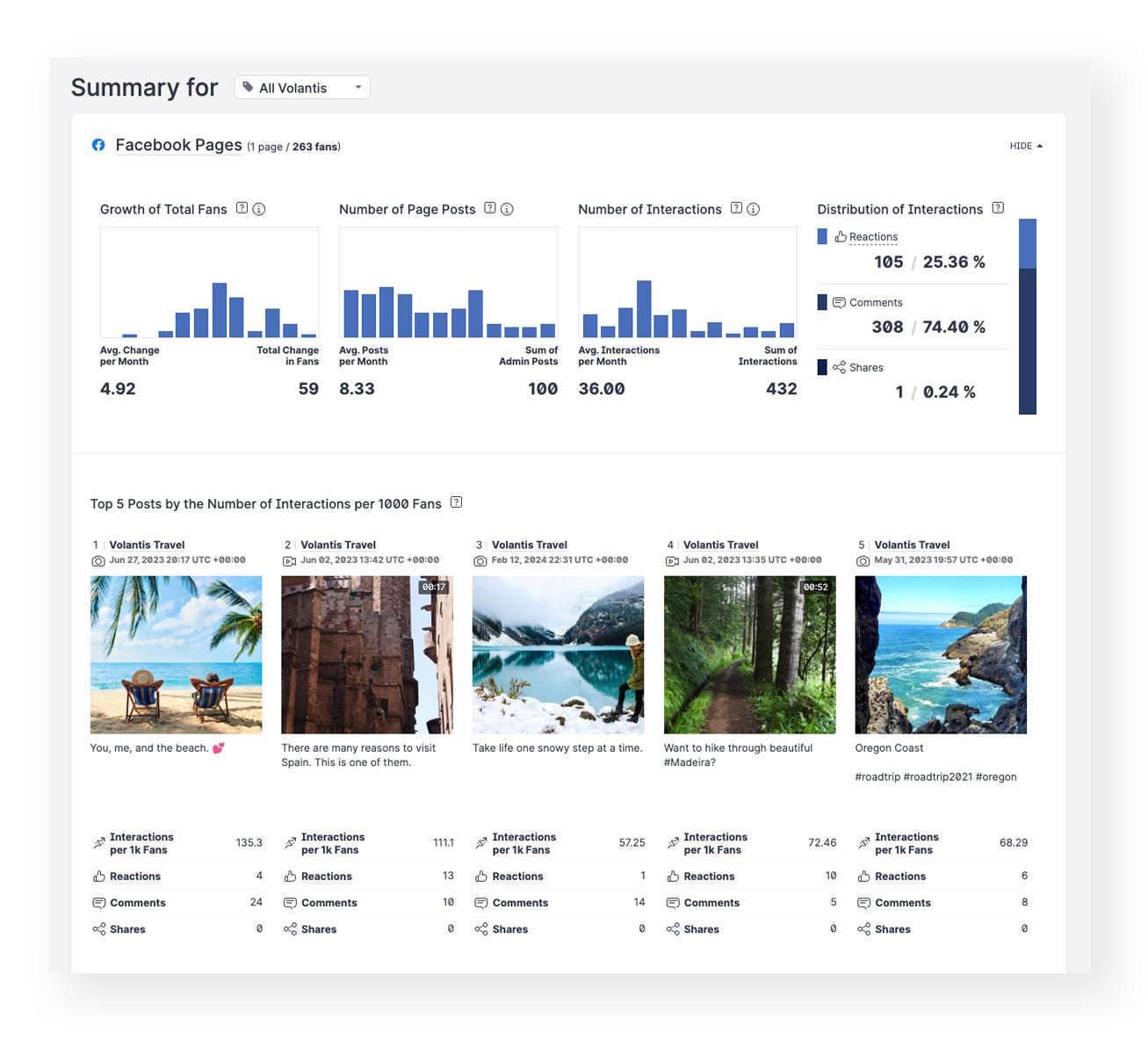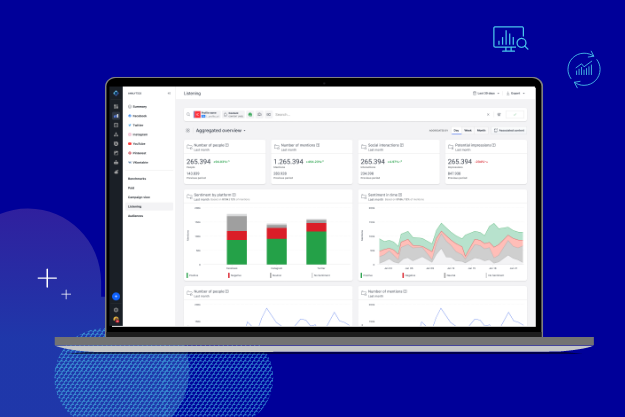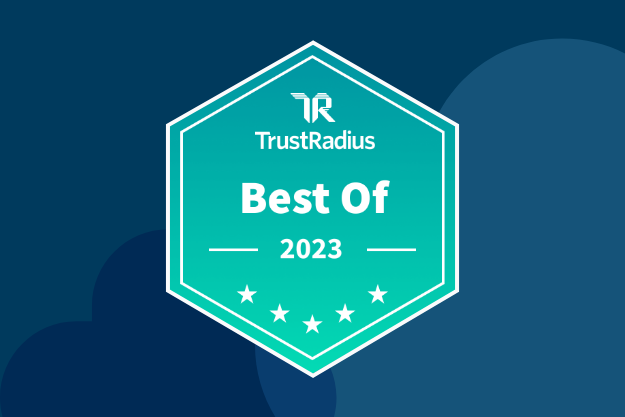A social media audit is an essential tool that helps brands assess and optimize their social marketing strategies to effectively meet their business goals. Any evaluation of your social media strategy is an opportunity to understand performance, audience insights, or just places to improve.
That shouldn't sound scary, but it involves opening your brand’s social media to scrutiny. You never know what you might find, but it’s better to have an honest understanding of your social media ecosystem. We’re going to walk through everything you need to know to understand how to conduct a social media audit for your brand, and ways to maximize the impact of that work.
What is a social media audit?
A social media audit is a comprehensive review and analysis of your social media presence and strategy. It involves evaluating all social media accounts to assess their current performance, consistency, and alignment with the brand’s goals. If you want to understand the health of your social media strategy and the effectiveness of your social marketing tactics, this is the place to start.

How does a social media audit benefit my brand?
Conducting a social media audit offers several benefits that can significantly enhance any brand’s digital marketing strategy. Social media is no longer simply a top-of-funnel marketing tool. It has a potential business impact across the entire customer journey, which means an evaluation of your social media can offer a direct impact on your bottom line. Here are some of the potential benefits of a social media audit:
Improved strategy alignment
An audit helps to ensure your social media activities are aligned with your broader business and marketing goals. This alignment is crucial for maximizing the impact of your social efforts and properly attributing social media’s role.
Enhanced audience understanding
Audits provide deep insights into who your followers are, what they’re interested in, and how they interact with your content. This information is vital for tailoring your content and campaigns to meet the needs and preferences of your audience.
Optimized content performance
By analyzing what types of content perform best, you can refine your content strategy to produce more of what works, potentially increasing engagement and reach.
Efficient resource allocation
With a clear understanding of which platforms and types of content are most effective, you can better allocate your time, budget, and resources, avoiding waste on underperforming assets.
Consistent brand messaging
An audit ensures that all your social media profiles reflect your brand accurately and consistently, which is essential for building trust and recognition with your audience.
Identification of gaps and opportunities
Regular audits help identify gaps in your social media presence and opportunities for growth, such as untapped audiences or emerging platforms.
Competitive advantage
By comparing your social media performance with that of your competitors, you can acquire insights into their strategies and target areas where you can differentiate yourself to gain a competitive edge.
Risk management
Audits can help highlight and address potential risks related to compliance with social media policies and regulations, thus protecting your organization from potential legal issues.
Measurement and accountability
By setting benchmarks and monitoring performance over time, an audit provides accountability and a framework for measuring the success of your social media initiatives.
When should I perform a social media audit?
The specifics of performing a social media audit are very specific to your brand, team size, and organizational goals. This is the type of exercise that can be a considerable amount of work without tools like a social media management platform. Here are some questions to consider before you decide when and how to approach a social media audit:
When was our last social media audit? If it’s been a year or more since the last audit, it might be time to conduct another to ensure strategies remain current with best practices and platform algorithms.
What are our current business and marketing goals? Understanding if your goals have evolved since the last audit can underscore the need to reassess your social media strategy to ensure alignment.
Have there been significant changes in our target audience or market? Changes in customer demographics, behaviors, or preferences – like the battle to understand Gen Z – often necessitate a reevaluation of your social media tactics and content.
Are we launching a new product or entering a new market soon? An audit can provide valuable insights into the best ways to engage with your audience and promote new offerings effectively.
Have we noticed a plateau or decline in engagement, follower growth, or other key metrics? A sudden change in performance metrics can signal underlying issues that an audit could uncover and address.
Are we utilizing new social media platforms or tools? The integration of new platforms or tools into your strategy can benefit from an audit in order to optimize their use and ensure they’re contributing effectively to your goals. New channels like Threads or TikTok’s new photo-sharing app are good reasons to reevaluate the landscape.
Have our competitors made noticeable changes or advancements in their social media approach? Keeping tabs on the competition can help you keep pace and remain innovative, prompting an audit when you notice significant shifts.
Is there an upcoming major campaign or event? Before launching major initiatives, an audit can help ensure that all platforms are optimized to maximize the campaign’s reach and impact.
Are there internal changes, such as new team members or shifts in brand direction? This might be the most common reason. Changes within your team or brand can affect the consistency and effectiveness of your social media presence, making an audit beneficial for reorientation.
These questions could give you the urgency needed to do a social media audit, but consider it worth aligning to an annual plan or around key milestones like new team members, brand accounts, or channels.

Why do I need an audit if I use social media analytics?
Tracking the performance of your social media activity is worth daily, weekly, monthly, and quarterly evaluation. That’s not going away, and social media is more important than ever for engaging customers. It’s a critical touch point for modern consumers, and it can give you social metrics that support customer insights.
So, why conduct an audit if you’re tracking things like follower counts, likes, shares, and engagement regularly? The difference is social media analytics provide valuable real-time data about how your content performs and how audiences engage with your posts, while a social media audit offers a broader, more strategic assessment of your entire social media landscape.
In short, you need both, and data is your friend in all conversations around making sure social media aligns with your business and directly impacts the view of your customer. A social media audit might impact your overall strategy, while an analytics dashboard could provide actionable insights that drive campaign or content decisions for your brand.
How to do a social media audit
Are you ready to start? For this exercise, we’re assuming that you have a social media management platform. It would be beneficial to have access to your brand accounts in that structure, as well as social media listening to make sure your audit covers all necessary touch points.
1. Define the goals of what you’re trying to achieve with the audit.
What do you want out of this? Think back to your questions to ask. Your goals will be defined by those conditions because a gap since your last evaluation, a new social team member, or changing demographics can all be a good reason to conduct an audit.
More than likely, you want to understand the health of your social media, but if you have a specific focus, like social media engagement or evaluating new brand channels, make sure you reflect that in your plan.

2. Gather a list of social media accounts that you want to track.
Every social media audit should start with your owned accounts, but you have to remember to include additional public profiles – like competitors – to help establish social media benchmarks.
Typically, your social media management platform will allow bulk uploads and labels for profiles, and categories to organize how you track all of this information. Benchmarks help you understand realistic expectations for your social media engagement and overall activity, so make sure you expand data sets when setting up your audit.
Key tactical steps to consider:
Compile a list of all social media accounts associated with your brand, including official and unofficial or outdated profiles. This includes verifying account security to ensure all accounts are secure, updating passwords if necessary, and checking that only authorized personnel have access.
Confirm that the bio, profile photos, cover images, and contact details are up to date and consistent across all platforms.

3. Establish social listening queries to establish brand perception and audience insights.
Social media is a conversation, and social listening and social media monitoring are foundational steps in the audit process to understand what your audience is talking about outside of your own accounts.
Each has a role to play in understanding how your customers feel about your brand and what affects their interests and behaviors, so make sure you have a platform that can feed you this type of data. For example, Emplifi’s social listening allows brands the ability to source 365 days of historic listening, meaning an audit can start with a year’s worth of intelligence for your brand.
Key tactical steps to consider:
Compare your social media presence with key competitors on similar metrics to identify strengths, weaknesses, and opportunities. You will learn something here, whether that’s topics or themes that you’re not considering or simplifying a reflection of your brand based on how they interact with a competitor differently.
Ensure that your brand’s voice, tone, and visual style are consistent across all platforms and align with your overall branding strategy. Customer experience is critical to the modern consumer, and part of that is being where they are and consistent when you engage them. Are your interactions with them seamless? Are you authentic? Answers to these questions will reveal themselves here.

4. Create social media analytics dashboards to understand performance and establish consistent reporting.
Social media data is now customer data, which means your audit will yield significant amounts of information. For that data to become insights, you need some help from your platform. Social media management tools allow you to create dashboards to track, measure, and report on any number of activities. You should build dashboards as extensions of your overall plan so that each priority is easily tracked, and if possible, shared with digital marketing teammates.
Key tactical steps to consider:
Gather and review analytics, so collect data from each platform’s analytics (e.g., follower growth, engagement rates, reach, impressions) over a relevant time period.
Schedule reporting for key stakeholders and marketing partners to share audit updates

5. Analyze your social media data for opportunities.
This isn’t a small step. If you’ve built your audit properly, opportunities will emerge. Pour through your social media analytics to assess current follower demographics, engagement rates, competitor activity, audience keywords, and benchmarks.
Your data will continually update, which is why it’s good to do a full audit every six months, and map your tracking and analysis with your social media analytics tool, which offers daily insights. Certainly, the opportunities and gaps you identify will need time for realization, but this model allows you or your team to keep an eye on the overall health of your social media presence.
Key tactical steps to consider:
Assess the types of content posted (e.g. images, videos, and text-based posts) and their performance.
Identify what content yields the highest engagement and why. You’re likely to notice higher performance among visual content, so try to understand what specifically (e.g. Instagram Reels or Carousels) saw impact.
Review who is engaging with your content, including demographic details like age, location, and interests, to ensure they align with your target audience. The better you understand your target audience, the more likely you can connect and convert based on your business goals.
Analyze how often you post and at what times, determining the effectiveness of your posting schedule. This is the beginning of a conversation about benchmarks, establishing your own, and comparing those to industry best practices.
Prioritize the recommendations based on impact and feasibility, and develop a detailed action plan with specific tasks, responsibilities, and timelines. Begin executing the action plan, making adjustments to your social media strategy based on the audit’s findings.

Need help with your social media audit?
The process for a social media audit may sound like a considerable undertaking, but it’s doable if you organize. There’s no one-stop solution for how to approach this effort, and it’s best to trust your instincts based on what you learn as you go through it. If you have questions along the way or would like to understand more about how a social media management platform and social media analytics would help, let us know.







































